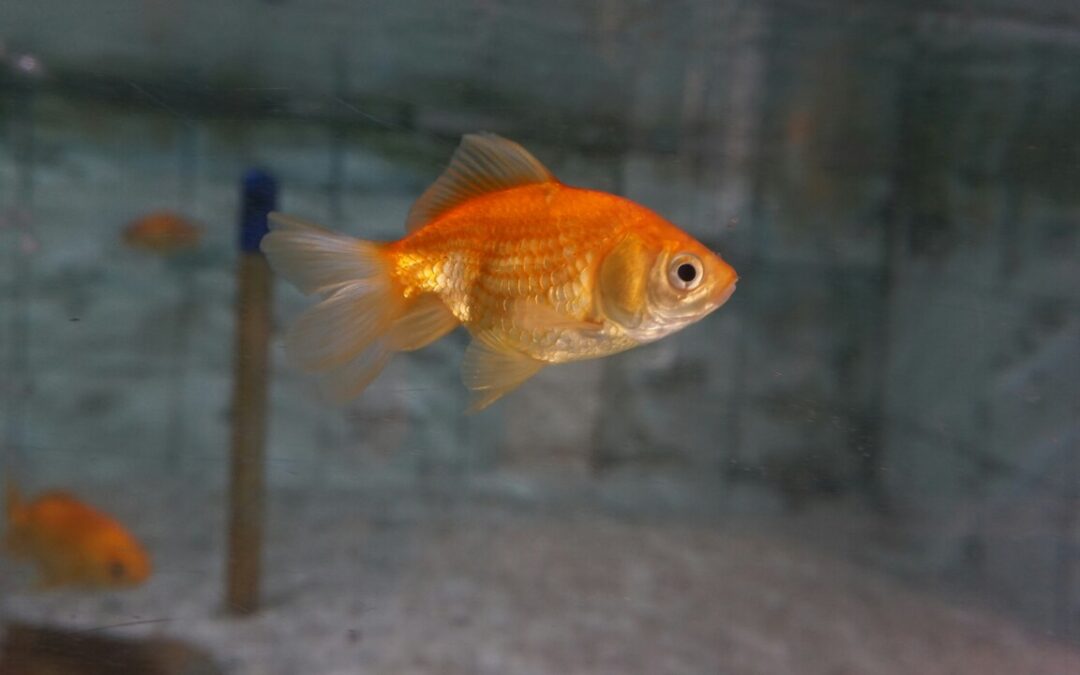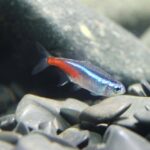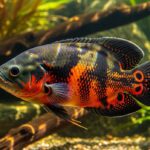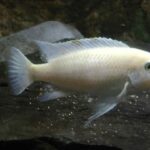When you think of goldfish, you probably picture a bright orange little fish swimming in a glass bowl, maybe sitting on a child’s nightstand or a living room table. For many of us, goldfish were our very first pets. They seem simple—just feed them some flakes, change the water once in a while, and you’re good, right?
Well, not quite.
One of the biggest myths about goldfish is that they can live happily in a bowl with no filter. While they can survive for a short time this way, it’s not a healthy or humane long-term setup. Goldfish are surprisingly messy, and without a filter, their water turns toxic much faster than you’d expect.
So, do goldfish need a filter? The answer is a resounding yes. A filter isn’t just “helpful”—it’s absolutely essential for their health and longevity. In fact, the right filter can mean the difference between a stressed, short-lived fish and one that thrives for years.
In this guide, we’ll take a deep dive (pun intended!) into why filters are necessary, how they work, which type is best, and how you can set up the perfect environment for your goldfish.
Why Goldfish Absolutely Need a Filter
Goldfish may be small, but they’re some of the messiest aquarium fish you can own. To understand why filters are so important, let’s break it down.
1. Goldfish Produce a Lot of Waste
Compared to other aquarium fish, goldfish have an inefficient digestive system. That means a lot of what they eat gets passed right back out into the water as waste. On top of that, they’re enthusiastic eaters who often spit out food and stir up debris, leaving behind a constant mess.
This heavy waste load is known as a high bio-load. The more waste in the water, the faster it gets polluted.
2. Ammonia Is a Silent Killer
The real danger of goldfish waste isn’t the sight of cloudy water—it’s the toxins you can’t see. As goldfish release waste, it breaks down into ammonia, which is extremely toxic to fish. Even low levels of ammonia can damage gills, stress your fish, and eventually lead to death.
Without a filter, ammonia builds up fast. It’s like living in a room where the air is slowly filling with smoke—eventually, you can’t breathe.
3. Filters Provide Biological Filtration
Luckily, nature has a solution. Beneficial bacteria grow on filter media and help convert toxic ammonia into nitrite (still harmful), and then into nitrate (less harmful but still needs controlling). This process is called the nitrogen cycle.
Without a filter, you don’t get enough of these bacteria colonies to handle the waste. With a filter, you create a stable ecosystem that keeps your goldfish safe.
4. Mechanical and Chemical Filtration
Besides hosting bacteria, filters also:
- Trap solid debris like uneaten food and poop (mechanical filtration).
- Remove dissolved toxins and odors using activated carbon or special filter media (chemical filtration).
Together, these processes keep the water clear, balanced, and breathable for your goldfish.
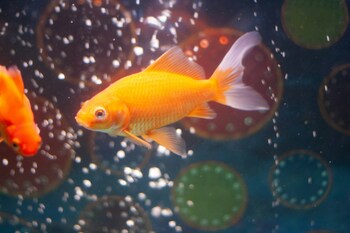
How Strong Should a Goldfish Filter Be?
Not all filters are created equal, and goldfish need more power than most tropical fish.
As a rule of thumb, your filter should turn over the entire volume of the tank at least 4–5 times per hour.
- 20-gallon tank → filter rated for 80–100 gallons per hour
- 40-gallon tank → filter rated for 160–200 gallons per hour
- 75-gallon tank → filter rated for 300–375 gallons per hour
A weak filter might work for guppies or bettas, but it won’t cut it for goldfish. Their high waste output demands serious filtration.
The Best Types of Filters for Goldfish Tanks
With so many options out there, which filter is right for your goldfish? Let’s look at the most common types.
1. Hang-on-Back (HOB) Filters
- Pros: Affordable, easy to set up, and provide mechanical, chemical, and biological filtration.
- Cons: May not be strong enough for large goldfish tanks on their own.
2. Canister Filters
- Pros: Very powerful, customizable, and great for larger tanks. They sit outside the tank, so they don’t take up swimming space.
- Cons: More expensive and require extra effort to clean.
3. Sponge Filters
- Pros: Cheap, simple, and great for fry or hospital tanks. They provide biological and mechanical filtration.
- Cons: Not strong enough on their own for goldfish tanks, but can be paired with another filter.
4. Internal Power Filters
- Pros: Sit inside the tank, often easy to maintain, good for medium setups.
- Cons: Take up space inside the aquarium, less efficient than canisters.
👉 For goldfish, canister filters are often the best long-term investment. They’re strong enough to handle messy waste and keep the water crystal clear.
Common Myths About Goldfish and Filters
Goldfish care has been surrounded by myths for decades. Let’s clear a few up.
Myth 1: Goldfish can live in bowls without filters.
Truth: They can survive for a short while, but they won’t thrive. Their life expectancy drops dramatically in bowls.
Myth 2: Frequent water changes are enough—you don’t need a filter.
Truth: Water changes are important, but they don’t replace the constant work a filter does. You’d have to change the water daily to mimic what a filter provides.
Myth 3: Goldfish don’t mind dirty water.
Truth: Goldfish are hardy, but that doesn’t mean they’re happy or healthy in poor conditions. Stress from dirty water makes them prone to illness.
Do Filters Replace Water Changes?
Here’s a big one: even with a filter, you still need to do water changes.
A filter converts ammonia into nitrate, but nitrates keep building up over time. High nitrate levels stress fish, encourage algae growth, and reduce water quality. The only way to lower nitrates is through regular partial water changes.
For goldfish, changing about 20–30% of the tank water once a week is usually ideal.
How to Keep Your Filter and Tank Healthy
A filter only works well if you take care of it. Here are some key tips:
- Rinse filter media every 2–4 weeks in old tank water (never tap water—it kills beneficial bacteria).
- Replace chemical media like carbon as recommended by the manufacturer.
- Don’t replace all media at once—stagger it so you don’t lose your bacteria colonies.
- Vacuum the gravel during water changes to remove extra debris.
And don’t forget to test your water regularly with a good aquarium test kit. Monitoring ammonia, nitrite, and nitrate levels helps you catch problems early.
Signs Your Filter Isn’t Doing Enough
Sometimes even with a filter, your goldfish tank might need extra help. Watch for these warning signs:
- Cloudy or smelly water
- Goldfish gasping at the surface
- Algae taking over the tank
- Sluggish or stressed behavior
If you notice these, it may mean your filter is underpowered, clogged, or due for cleaning.
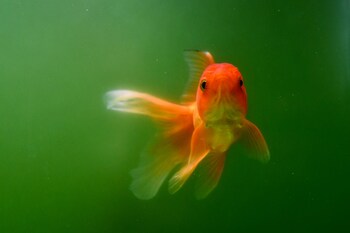
Fun Facts About Goldfish and Filters
- Goldfish can grow over a foot long in large tanks or ponds—bigger fish means more waste, which makes a filter even more crucial.
- In the wild, goldfish ancestors lived in lakes and ponds with constantly circulating fresh water. A filter mimics that natural flow.
- Some aquarists run two filters at once for goldfish tanks—one for strong filtration, and one as a backup in case of failure.
FAQs About Goldfish and Filters
1. Can goldfish survive without a filter?
Yes, but not for long. Without a filter, ammonia builds up quickly and can kill them.
2. Do I need a filter for just one goldfish?
Absolutely. Even one goldfish produces a surprising amount of waste.
3. Can I use a sponge filter only?
For fry or small setups, yes. For adult goldfish, a sponge filter should be paired with something stronger.
4. How often should I clean the filter?
Rinse the media every few weeks, but don’t scrub everything at once. Keep your bacteria alive!
5. What’s the best filter for goldfish tanks?
Canister filters are ideal for larger tanks. For smaller tanks, a strong HOB filter works well.
6. Do filters make water changes unnecessary?
No. Filters and water changes work together. Filters handle toxins daily, while water changes reset nitrate levels.
7. What if my filter breaks?
Do a partial water change right away, add an air stone for oxygen, and fix or replace the filter quickly.
Final Thoughts
So, does a goldfish need a filter? The answer is yes—without question. A filter is not just a convenience; it’s essential for removing toxins, supporting beneficial bacteria, and keeping the water healthy.
Think of it this way: a filter is your goldfish’s life-support system. Without it, you’re forcing them to live in polluted water. With it, you’re giving them a safe, stable environment where they can thrive, grow, and show off their wonderful personalities.
Pair a powerful filter with regular water changes, good feeding practices, and careful monitoring, and your goldfish can live not just for a few months in a bowl, but for years—even decades—in a proper tank.
Your goldfish deserves more than a bowl. With the right filter, you can give them a real home.

